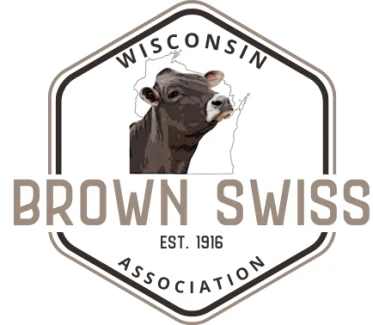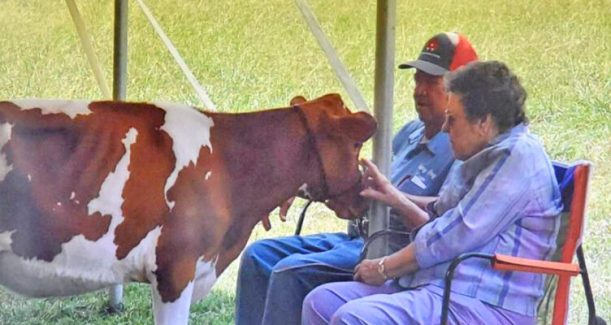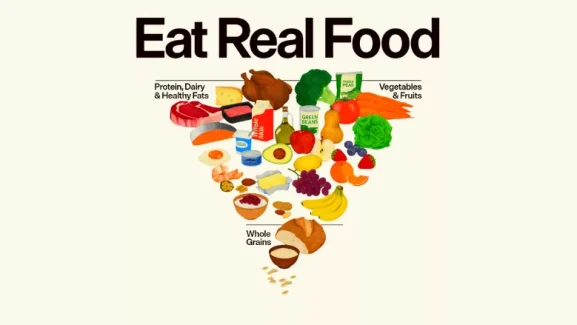Scroll through the various nuggets of news and informational tidbits on Ben & Jerry’s website, and you’ll find a sentence that sums up one of the company’s core values: “We love making ice cream – but using our business to make the world a better place gives our work its meaning.”
The iconic company is known for its proactive work on a wide range of social justice issues. Specific to its dairy supply, Ben & Jerry’s established its Caring Dairy program in Europe in 2006 and in the U.S. in 2011.
Through the Caring Dairy program, participating farms have implemented innovative solutions that drive thriving livelihoods for farmers and farmworkers, provide excellent animal welfare and build soil health through regenerative practices.
Two years ago, the company launched a Low Carbon Dairy pilot project to expedite the adoption and trialing of climate-friendly practices and hired Rebecca Manning as its project coordinator.
Focus On The Farms
The northwest Vermont farm girl didn’t travel far when she left her family’s dairy operation in Franklin County – where she served as a herdsman for 15 years – and joined Ben & Jerry’s at its corporate headquarters, roughly an hour from home, in South Burlington. There, she works with the seven U.S. Low Carbon Dairy farms under the auspices of the company’s overarching Caring Dairy program to address each farm’s carbon footprint.
As part of the process, the company has taken measurements based on units of CO2e (carbon dioxide equivalent) per kilogram of fat-protein corrected milk, to benchmark each farm’s carbon footprint.
“That has been very important for our farms to be able to use as a driver to decrease their footprint,” Manning says.
Initially, Manning says when she started her new role at the company, she wondered why Ben & Jerry’s decided to focus on dairy farms’ carbon footprints rather than some other aspect of the business.
“I probably thought, maybe like some of the farmers we work with, ‘Why don’t they focus on their plants and look at manufacturing, that that’s where a huge part of the footprint comes from.’ But I learned that’s not true,” she says.
Instead, 75% of the company’s total carbon footprint is made up of ice cream ingredients and product packaging.
“Manufacturing is actually a very small piece of the total footprint,” she says.
But the company doesn’t buy into the premise that animal agriculture, and dairy specifically, is inherently bad for the environment. Instead, the company is flipping the script on the environmental myths often portrayed in media.
“Ben & Jerry’s wants to demonstrate that dairy can be part of the solution to climate change,” Manning says. “That’s what we’re trying to do with the Low Carbon Dairy project.”
An Ambitious Goal
The multi-year Low Carbon Dairy project – under the auspices of the company’s Caring Dairy Program – takes a whole-farm approach to addressing GHG emissions, using seven intervention categories: enteric, regenerative agriculture, nutritious homegrown feed, renewable energy, animal welfare and longevity, nature and biodiversity and manure management.
The goal of the Low Carbon Dairy project is ambitious – to see if the company can help reduce the carbon footprint on the seven U.S. farms Manning works with by 50% in three years.
“But we’re not looking to do that at any cost,” she says. “We are trying to look at everything. We also want to make sure that we’re optimizing farm productivity, enhancing farm finances and helping increase farm resilience. We want these farms to be able to continue producing the milk needed to produce the ice cream that we make.”
All seven of the farms, predominantly Holstein-based, are within 30 miles of the Ben & Jerry’s ice cream plant and are representative of the farms the company works with across its business. The smallest farm has a 60-cow herd and a sole proprietor, while the largest farm milks just under 1,000 cows. The remaining five farms are in what Manning calls the “really tricky” 300- to 600-cow range.
“We’ve learned it can be more difficult to find solutions for these smaller herds; whereas, if we worked with only bigger farms, some practices may be easier to implement,” she says.
Solutions In The Making
Consumers not acquainted with dairy operations often assume the biggest contributor to a dairy farm’s carbon footprint results from manure. “Cow farts and manure get a lot of press,” Manning says.
Instead, the biggest single source of emissions on the dairy is from enteric fermentation, created as cows ruminate. As they ruminate, they exhale methane as a by-product.
Manning is hopeful enteric solutions that are becoming available and currently undergoing research will be part of the GHG strategy for the farms doing business with Ben & Jerry’s.
“We are optimistic about the potential of these solutions for use on these farms,” Manning says.
She notes that Ben & Jerry’s pays a stipend to the seven farms to cover staff time and practice adoption as part of the low-carbon project, and they also cost-share with producers on a variety of projects. “We don’t force our farm partners to adopt a solution that’s not right for that farm and that’s not right for their management style,” she says. “The farmers have to have a reason that matters to them for why they adopt a practice or install something on their operation.”
Some of the projects the company has helped farmers cost share include robotic feed pushers, feed storage improvements to prevent spoilage, urease inhibitors, manure technologies, and even the installation of solar panels on barn roofs.
Animal Welfare And Longevity
All of the US dairy farms that participate in Caring Dairy are working towards certification to the Global Animal Partnership (G.A.P.) animal care standard, a robust animal welfare standard for dairy, verified by third-party audits. “This is something Ben & Jerry’s is definitely pushing the envelope on a bit in asking the producers to do some things that might bring them outside their comfort zone,” she says.
Manning has been working with Novus International to analyze cow comfort, facility design and management on each farm through their C.O.W.S. program, and then working with the farms to make improvements.
“Farmers are pleased to find that healthy, productive cows drive down greenhouse gas emissions while also increasing the productive life of the herd,” Manning says.
On one farm, the producer resized some of his barn stalls to better accommodate the size of his cows.
“Since the assessment late last summer, he has had the hoof trimmer there weekly (a change from bi-weekly visits) working with his cows and has seen a significant reduction in the number of blocks that are going on,” she says.
Beyond The Cows
On the cropping side of the equation for the farms, Ben & Jerry’s has partnered with the University of Vermont Extension service, who has played a pivotal role in supporting the broader Caring Dairy program in the adoption of biodiversity improvements such as including the use of cover crops, adopting reduced tillage and no-till, and decreasing the use of synthetic inputs.
“We have seen a lot of success with these regenerative agriculture practices,” Manning says. “For instance, these practices have led to increases in soil respiration, soil carbon storage, and overall soil health metrics. In addition, the farms have improved their perennial grass stands by renovating with a biodiverse seed mix recommended for our region.”
In 2023, the company helped the seven farms in the low-carbon project improve 350 acres of grass land.
“This year we plan to rejuvenate almost 600 additional acres, which combined will account for almost 25 percent of the grass acres in the Low Carbon Dairy project,” she says.
Progress To Date
Addressing climate change, and working to reduce greenhouse gases, is a long-term undertaking. It takes time to move the needle in the right direction. But after a couple of years of effort, Manning is pleased with the results.
“So far, we’ve seen a 16% reduction in emissions on these farms as compared to our 2015 baseline,” she says. “And we’re not done yet. We plan to scale up successful practices across Caring Dairy in the future.
“The conclusion here is that the farmers that we’re working with are working really hard in all of these areas and are driving positive impacts across all aspects of their dairies,” Manning adds. “We’re proud of the farmers that we work with and appreciate the relationship that we have with them. We know their focus is on running their farms but applaud them for taking on this additional initiative.”



